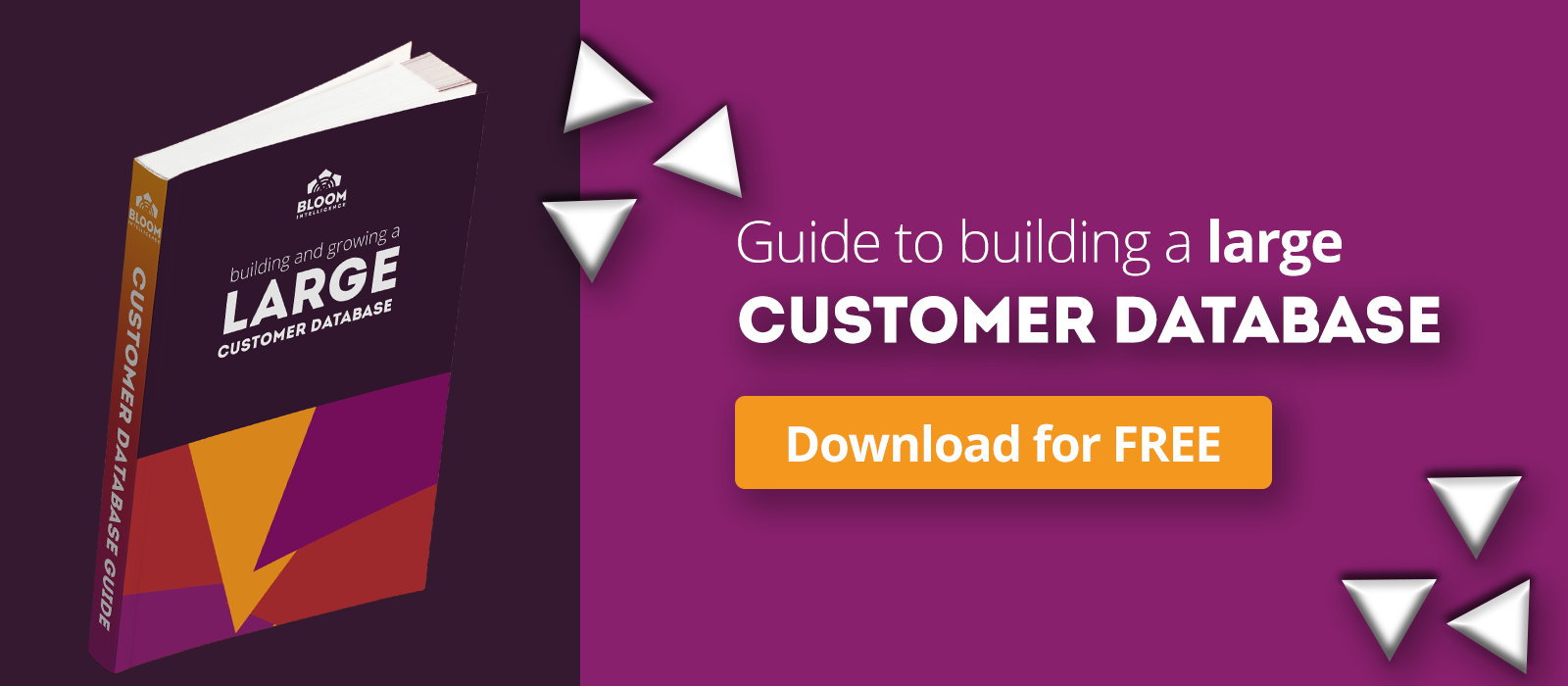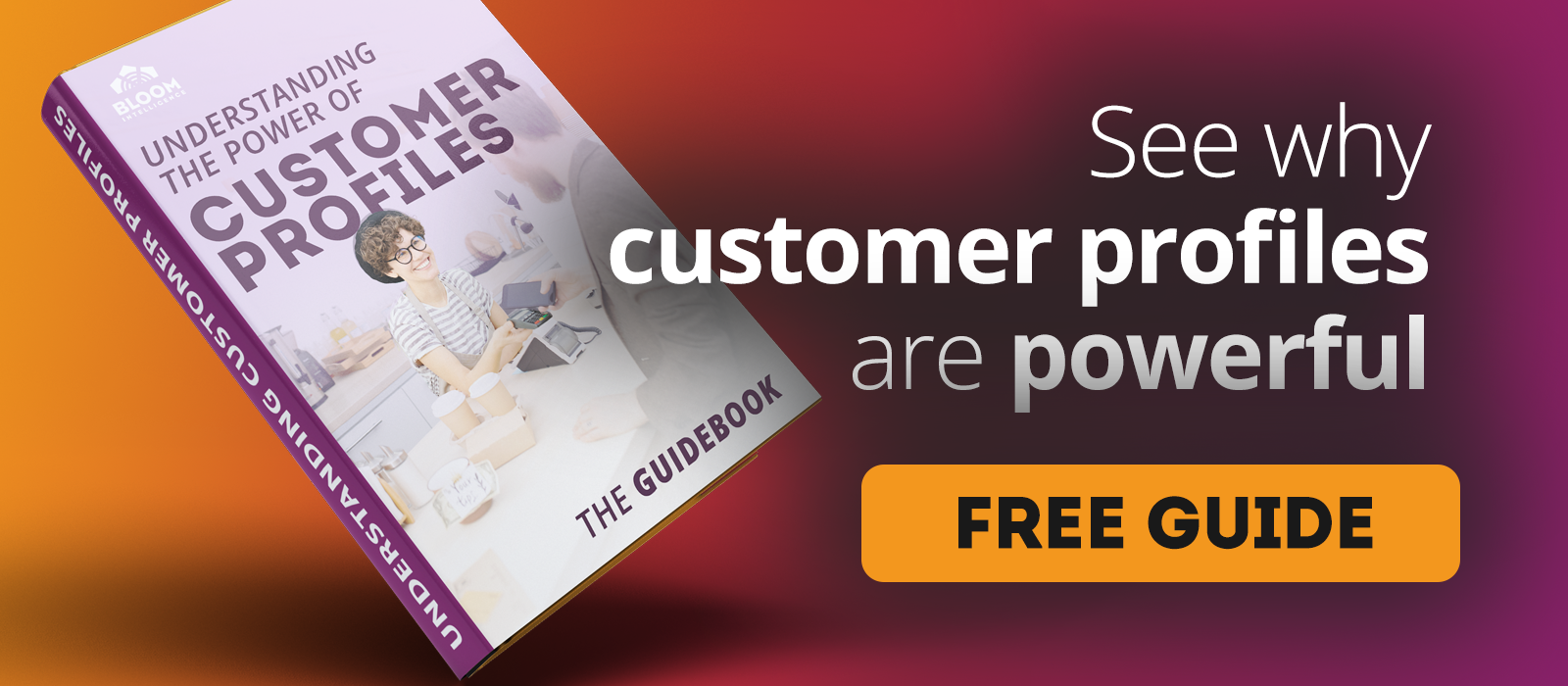Why is Personalization Important?
When creating marketing campaigns for physical locations, a keen eye on ROI and the messages you are sending is crucial.
To do so, it is important to personalize your messaging and send those messages to segmented lists of customer personas.
Why? Because today’s consumers expect messaging that interests them. Personalization allows you to send specific targeted messages to specific customers, or groups of customers.
Since the message is created to appeal to those specific customers, their engagement with your message will improve dramatically. Likewise, they will remember your brand as one that they can trust.
Unfortunately, most restaurateurs are still executing mass marketing campaigns. This means they create a single marketing message or advertisement and send it to their entire customer base without any personalization of the messages.
Sure, the message may interest some, but personalization can increase engagement and have a tremendous effect on the ROI of your restaurant marketing budget.

The Statistics
Here are some recent statistics which compare personalization to mass marketing campaigns.
- A personalized customer experience leads to 77% of consumers willing to choose, recommend, and even pay more for your products or services.
- In an average marketing campaign, mass marketing leads to an 83% lower response rate then personalized campaigns.
- Personalized campaigns can increase revenue by 5-15% and reduce acquisition costs by up to 50%.
- Personalized content leads to repeat business in over 40% of consumers.
- Calls to Action that are personalized convert a whopping 202% better than non-personalized CTAs.
- A personalized customer experience leads to an average increase of 56% in sales, according to marketers.
- 87% of consumers surveyed say that personalized, targeted, branded content has a positive impact on how they feel about a brand.
These are just a few of the latest statistics showing that personalization in marketing and advertising works.
But it is impossible to execute personalization without knowing who your customers are and what their interests are.
For restaurants, traditionally it has been very difficult to gather comprehensive, verified data on a large percentage of their customer base – until now.
Fortunately, our customer experience platform allows brick-and-mortar businesses to passively collect huge amounts of data that is cleaned about their customers.
You can create massive customer databases from which various customer buyers’ personas can be created. Then, you can begin creating targeted, personalized marketing and advertising campaigns with a much higher ROI.
It All Starts With The Data
If you are ready to begin using personalization in your campaigns – and you should be – you need to collect as much data as possible to create your buyer personas.
Remember, personalization is only ever as good as the data you collect.
Using WiFi Access
Bloom uses your existing WiFi access points to gather anonymous behavior data from your customers. Even if they do not log into your WiFi.
When customers do log into your WiFi , they are taken to a captive portal, also known as a WiFi landing page. This page will require them to enter their name and contact information (email, phone, etc.) prior to gaining online access.
Then a customer’s profile will immediately be created for the customer. Any previous data associated with their WiFi device will be added to their customer profile. Or, if they log in using their social media account, any shared data from their account will be added, such as their birthday/age, gender, or postal code.
You can immediately begin remarketing to them based off their previous behavior data and demographics.
Likewise, over time you can gather even more rich data using progressive profiling. This means that every time they attempt to log into your WiFi, our system will ask them for a different piece of information to add to their profile.
This allows our customer experience platform to build the most comprehensive customer profiles with clean, verified data.
Using Your Website
You can also use your website to build more customer profile. This is accomplished by adding a small piece of code into your website which will execute a small popup asking for name and email. You can offer an incentive, or simply let them know they will receive updates on new items, new website content, events or any other information.
Any data you collect with Bloom is owned by you. It will never be given away or sold.
Segmentation for Customer Buyer Personas
Now that you have a constantly growing customer database full of rich, clean customer profiles, you can begin creating your various customer buyer personas.
Bloom allows you to filter your customer database by several behavioral and demographic data.
You can segment personas based on a range of factors, such as age, gender, and location, as well as behavior habits like frequency and dwell time, or the likelihood that they are churning. Any combination of these factors is possible.
Then you can save them into various static or smart lists. Make sure to give your list name a very detailed title so it will be easy to identify when creating your campaigns.
Static lists will never change, so any new customers who meet the criteria will not be added.
Smart lists are dynamic, and customers can move in and out of the list when they do or do not meet the list criteria.
Personalization Examples
Some examples of segmented lists might be:
- Women over 30 who visited on Mother’s Day of last year
- Any customer who has visited more than x times
- Customers whose average dwell time is under 20 minutes
- Men below 45 years old who have only visited your establishment once
- Women/Men who only visit at lunchtime
- Customers at-risk for churning with a PPA over $20
While building these lists, you will need to be brainstorming about how to effectively engage these groups. As you go through this process, ask yourself and your team members these questions:
- What kind of action do I want this customer to take?
- What is the best way to reach this customer?
- Think of the kind of deals or promotions would interest this customer?
- What kind of deals and promotions would this customer NOT be interested in?
- What new products or services might engage this customer?
- How can I attract and engage more customers like this?
- What is this customer’s pain points? Why do they need what I offer?
- What type of imagery would engage this customer?
This will feed directly into content creation for your marketing messages and your advertising. For each customer persona (list) you can create messaging that resonates well with that group – messaging that they are more likely to engage with.
In addition, you can add personalization tokens to your email campaigns.
For instance, in your message you can simply start with Hello. But with personalization tokens, you can start with Hello <first name>. As the email is sent, the platform reads their first name out of their customer profile data and plugs it into the copy.
Or you could use multiple tokens in a single message, such as:
“Hello <first-name>, <birthdate> is coming up fast! Come in for a free birthday dessert!”
Adding personal information like this into your messaging can further improve the engagement and ROI of your campaigns.


Advertising with Customer Data
Not only can you create highly engaging, targeted marketing campaigns, you can use your customer data to boost the ROI of your advertising campaigns as well.
Facebook, Instagram and Google Ads all offer a tool that can ensure your ad is only served to people who are likely to engage with it.
For Facebook and Instagram (both configured in the same tool), there is a type of campaign called a Lookalike campaign.
To execute this campaign, you simply export a copy of one of your customer persona lists, which will include email addresses.
Then, you upload the list into the Facebook Ad Manager. The tool will begin parsing your customer list and then begin to understand the overall demographics and behavior patterns of your customer list.
From then on, Facebook and Instagram will only show your ad to users who closely match the customers from your list. You can further target the list by selecting a specific region, age bracket, gender, and so on.
You then attach your targeted advertisement, and it will only be seen by the lookalike audience.
Customer-Only Targeting
Or you can target only your customers with Facebook/Instagram ads.
When a customer logs into your WiFi, Bloom can trigger a Facebook pixel.
This gives you the option to target those customers with Facebook and/or Instagram ads using Facebook’s custom audience feature. For more on Facebook pixels, check out our advertising page.
For instance, when someone is at your place of business and logs into WiFi, the pixel is triggered and recorded. Unlike cookies, the pixel is not stored on the user’s device, but Facebook sees the connection and adds them to your list of customers.
Then, when you create a Facebook ad campaign, you can instruct Facebook to show the ad only to those who triggered the pixel.
Online store Sanea Haushalt created Lookalike audiences based on their customers and showed them ads. When sales grew, they created more Lookalike audiences based on the top 10% of the store’s best customers. They showed retargeting ads to this group.
Their results? They attracted 46,000 unique customers in 6 months, decreased their Cost Per Purchase by 24%, and increased customer volume by 300% over 18 months.
Google also has a version of lookalike campaigns that you can use alongside Bloom to bring in new and existing customers.
At any time, you can easily export all of your customer email addresses into a spreadsheet. Then, you can upload the spreadsheet into the Google Ads platform.
The platform will analyze the characteristics and behavior patterns of the customers and create your similar audience to target through Google Ads, YouTube, and/or Gmail.
These campaigns allow advertisers to scale successful performance and reach an audience 7 times larger. And similar audiences also enjoy a 65% higher click-through rate than other new visitor audiences.
In conclusion, it is easy to see how segmentation and personalization can improve your restaurants marketing and advertising ROI tremendously.
Discover Bloom Intelligence
In a dynamic and competitive marketplace, it is more important than ever to get customers through your door – and keep them coming back.
Retail and restaurant owners and operators need to have an effective way to get their brand image in front of current and potential customers over and over. This will keep their brand top-of-mind when consumers are thinking about a place to spend their money.
Through effective personalization, the Bloom Intelligence Customer Experience Platform helps restaurant and retail owners and operators make the most of their advertising and marketing campaigns.
If you would like to see more of what Bloom can do to help your business thrive in today’s economy, call us at 727-877-8181 or click to schedule a demo online.

SAVE TIME, INCREASE CUSTOMER LIFETIME VALUES, CREATE NEW CUSTOMERS
What our happy customers
are saying
Personalization FAQs
What Does CRM Stand For?
CRM stands for Customer Relationship Management database. A CRM database is a collection of customer data grouped into customer profiles. Therefore, a CRM can be used to understand your customer base, and for segmented, targeted marketing campaigns that can be tracked for accurate attribution.
What is a CRM Database?
A CRM Database is a digital collection of individual customer information grouped into customer profiles. The database consists of detailed customer data such as names, behavior data, demographics, addresses, zip codes, emails, and phone numbers. Likewise, these profiles are used to track communication and to remarket to customers.
What are Examples of a CRM Database?
An example of a CRM database for offline companies is the Bloom Intelligence CRM database. Using guest WiFi access points & guest WiFi landing pages, the platform collects customer behavior data, whether they log into WiFi or not, and builds detailed customer profiles for marketing and attribution. To compare, other popular CRM’s include Salesforce, Microsoft Dynamic, and Hubspot.
How Do I Create a CRM Database?
For restaurant and retail locations, the easiest and best way to create a CRM database is to use your WiFi access points, Guest WiFi landing page, website widgets, and API’s to collect customer information and behavior data. Then, once configured, your customer data is collected and cleaned automatically.










